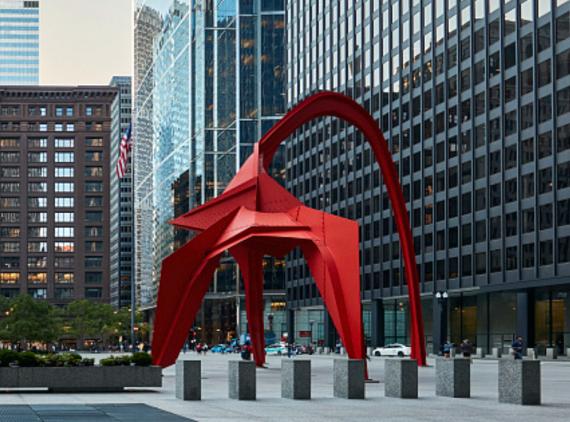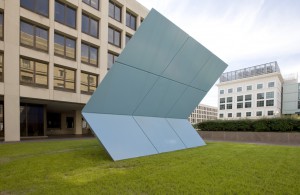
The U.S. General Services Administration (GSA) is updating provisions of its Art in Architecture program, which commissions visual art in federal buildings, to expand access to a broader array of artists and better reflect the diversity of America in public art. Seeking to diversify the pool of artists competing for Art in Architecture commissions, GSA issued a new Federal Management Regulation final rule, published on January 31 in the Federal Register. The rule removes restrictions on subject matter, theme, and art styles, restrictions that had excluded many artists from consideration for commissions.

These policy updates align the program’s outreach with the goals of the executive order on Advancing Racial Equity and Support for Underserved Communities Through the Federal Government.” GSA’s public art collection is a national treasure, and this rule reflects the government’s important role in ensuring equity and opportunity for artists of all kinds and from all communities,” said GSA Administrator Robin Carnahan. “Public art is for the people, and we want to make sure our public spaces reflect the rich diversity and creativity that strengthens and inspires them.”
“With the issuance of this rule, GSA expands the opportunities for artists to be considered for an artwork commission,” said GSA Office of Government-wide Policy Associate Administrator Krystal Brumfield. “At the same time, GSA is seeking input and feedback from the public on how GSA can ensure that the Art in Architecture program promotes civic engagement and aligns with the priorities of diversity, equity, and inclusion of underserved communities.”
GSA’s intent to modify policies in the final rule reverses currently restrictive requirements and updates definitions to be more inclusive of different visual arts.

“As we approach the 50th anniversary of GSA’s Art in Architecture program, GSA has renewed its commitment to commissioning artists of our time to create artworks for federal buildings,” said GSA Public Buildings Service Commissioner Nina Albert. “By supporting neither an official style nor subject matter, Art in Architecture seeks to include artists who work in many styles and materials and come from the diverse communities of our nation. Incorporating contemporary art in our important civic spaces exemplifies how democratic societies benefit from the creative talents of individuals.”
GSA reserves one-half of one percent of the estimated construction cost of each new federal building and selects new prospectus-level modernization or repair and alteration projects to commission project artists. Artist candidates for Art in Architecture commissions are most often identified from GSA’s National Artist Registry, which is a database of artists who have previously submitted digital images of their past portfolio work. Artists may also be identified through other sources, such as from posted solicitations for active procurements. There is no fee to join the registry, which currently has approximately 1,700 artists and is open to all artists who are U.S. citizens or lawful permanent residents.
With the publication of this rule, GSA is encouraging artists to apply to the National Artist Registry [PDF – 63 KB]. It is also seeking public comment for the next 60 days on ways GSA can proactively engage underserved communities during the commissioning process for a work of art, increase the diversity of the pool of artists considered for the Art in Architecture program, and improve the accessibility and inclusiveness of public works of art.
The rule applies to federally owned facilities under the jurisdiction, custody, and control of GSA.
